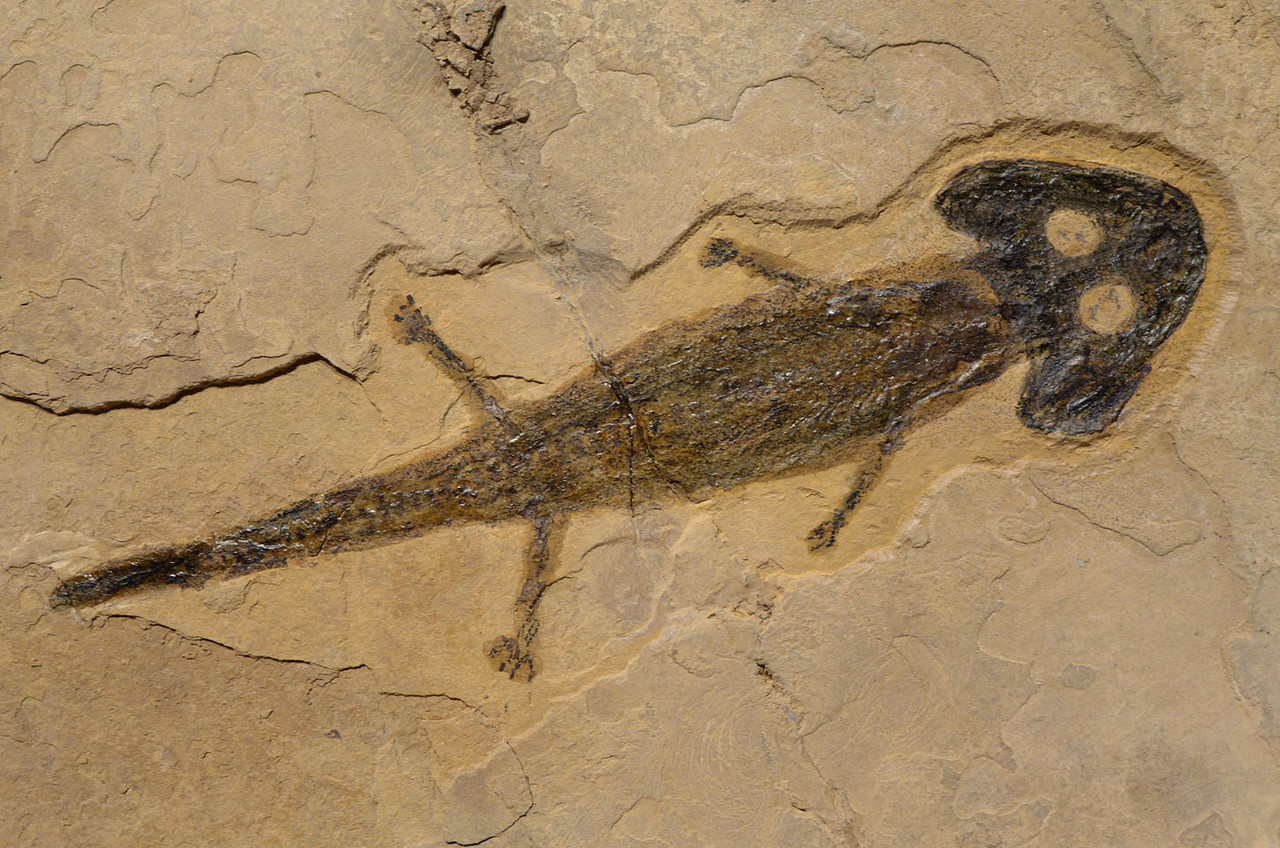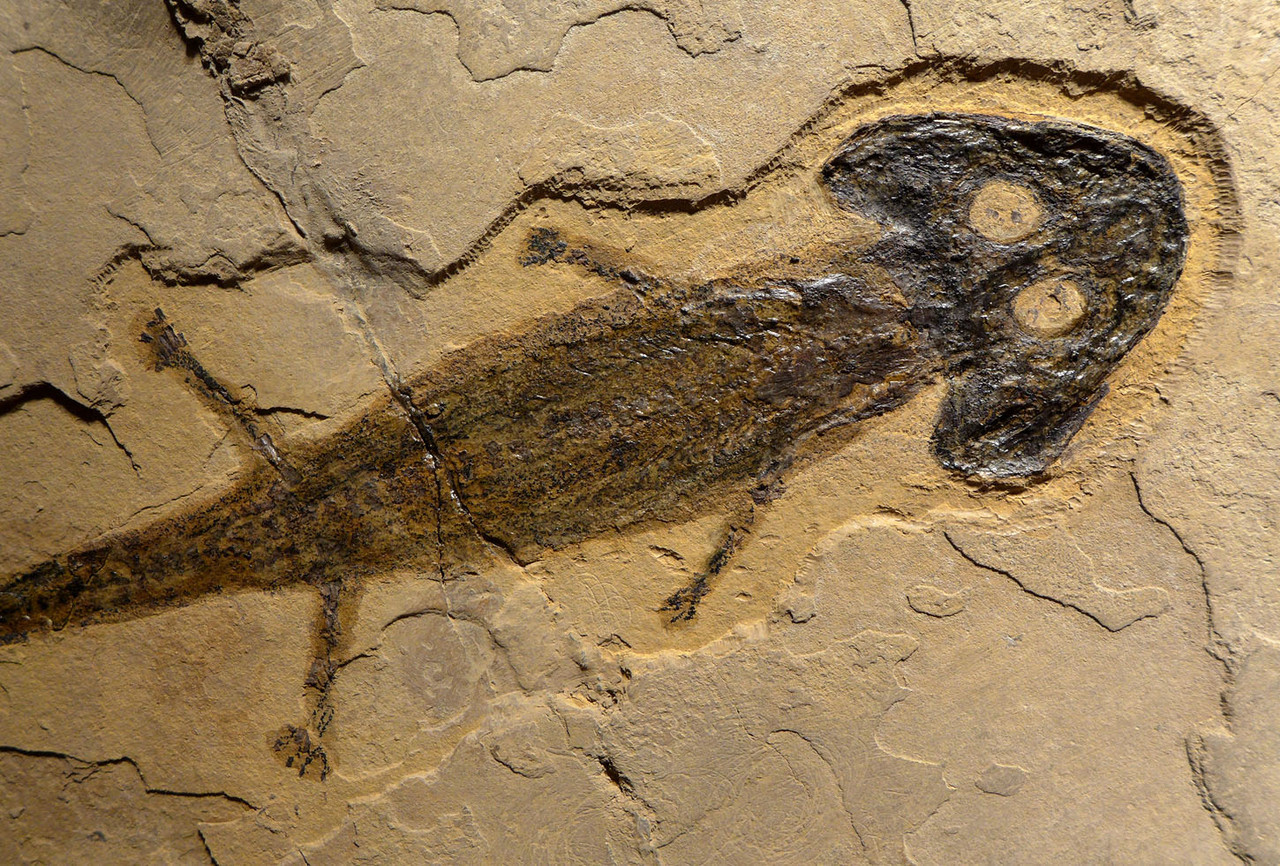Product Description
SPECIAL NOTE: The current laws in this region of Germany now forbid the collection of these remarkable fossils. Such legislation has permanently ended the supply of such magnificent specimens such as this one being offered here. This rare example comes from an old German private collection and was collected long ago before the ban was enacted. With digging in the formation now off-limits, these rare German Permian fossils are sure to appreciate in value and become increasingly difficult to acquire.
Sclerocephalus is an amphibian that once inhabited the Permian swamps of what is now Southwest Germany. Fine grade fossils of Sclerocephalus are extremely rare and of great interest and demand to advanced collectors. Since the deposit has since been closed to collecting for many decades, locating an exceptional specimen on the market has become quite difficult. In the rare instance one does become available for sale, they are usually partial body specimens or with fair to poor natural preservation, with restored and painted parts that were missing.
This spectacular example has not only COMPLETE skeletal remains present, but the soft body tissue is also preserved on the rock. The rock plate is the original Permian shale in which this prize fossil amphibian was found in. There is no compositing or carving of bones. All limbs and skeletal details are visible with heavy preservation to the skull and pectoral girdle. Soft body tissue shows rare preservation down to the tip of the tail. Only the fossilized portions of natural origin were sealed with a reversible preservative in order to protect the fragile nature of the fossil.
The articulation and completeness of the amphibian is not often seen in this quality in a perfect, outstretched position. The preservation of soft body tissue from this species dates back to 280 million years ago which is quite impressive.
Sclerocephalus was one of the apex predators of the Permian swamps of what is now southwest Germany. These amphibians could attain lengths as large as an adult human but most fossils are of examples less than 12 inches long. These monsters thrived during a time before the first dinosaur walked the planet.
 US DOLLAR
US DOLLAR
 EURO
EURO
 AUSTRALIAN DOLLAR
AUSTRALIAN DOLLAR
 CANADIAN DOLLAR
CANADIAN DOLLAR
 POUND STERLING
POUND STERLING


















